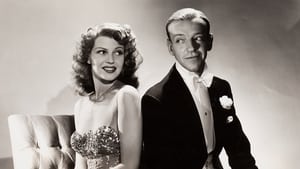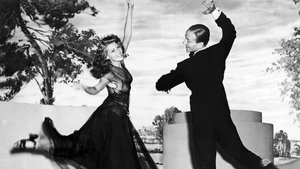Contact: info@alwanfilm.com
Video Sources 0 Views
- Watch trailer
- You Were Never Lovelier


Synopsis
Table of Contents
ToggleReview: You Were Never Lovelier 1942 Colorized – A Charming Romantic Comedy Musical

Introduction
You Were Never Lovelier, released in 1942, is a delightful romantic comedy musical directed by William A. Seiter. Renowned for its enchanting music, sparkling performances, and irresistible charm, this classic film continues to captivate audiences with its timeless appeal. In this review, we’ll explore the delightful world of You Were Never Lovelier and its enduring legacy in the realm of romantic cinema.
Check The Full Colorized Movies List
Check Our Colorized Movies Trailer Channel
Understanding You Were Never Lovelier 1942 Colorized: Director, Cast, and Genre
Directed by William A. Seiter, You Were Never Lovelier boasts a talented cast led by Fred Astaire and Rita Hayworth. The film belongs to the romantic comedy musical genre, known for its catchy tunes, witty banter, and heartwarming love stories.
Exploring the World of You Were Never Lovelier 1942 Colorized: Plot and Characters
You Were Never Lovelier follows the charming tale of a wealthy Argentine businessman, Eduardo Acuña, who mistakenly believes that a dance instructor named Maria is his secret admirer based on letters written by her father. As their romantic entanglements unfold against the backdrop of a luxurious hotel, misunderstandings and comedic mishaps ensue, leading to a delightful journey of love and laughter.
The Art of Film Colorization
While You Were Never Lovelier was originally filmed in black and white, its early colorized version adds a new layer of vibrancy to its enchanting visuals. The colorization process enhances the film’s lush cinematography and captures the glamour of its musical sequences with dazzling clarity.
Early Colored Films: A Brief History
The history of early colored films is marked by innovation and creativity as filmmakers sought to enhance the visual appeal of their musicals and comedies. From hand-painted frames to pioneering technicolor processes, the evolution of colorization techniques transformed the cinematic landscape, offering audiences a new way to experience the magic of musical cinema.
You Were Never Lovelier (1942) and Its Early Colored Version
The decision to release You Were Never Lovelier in a colorized format was made with the intention of immersing audiences in the glamour and romance of its musical numbers and enhancing the film’s visual appeal. While some purists may prefer the original black and white version, the early colorized edition of You Were Never Lovelier adds a new layer of vibrancy to its enchanting visuals and captures the magic of its romantic storyline with breathtaking clarity.
The Debate Over Film Colorization
The debate over film colorization continues to divide audiences and industry professionals alike. While some argue that colorization breathes new life into classic films and makes them more accessible to modern audiences, others maintain that it compromises the artistic integrity of the original work. As technology advances and filmmaking techniques evolve, the debate over colorization remains a topic of ongoing discussion within the film community.
Examining You Were Never Lovelier (1942) as an Early Colored Film
Viewing You Were Never Lovelier in its early colorized iteration offers audiences a fresh perspective on its enchanting visuals and heartwarming romance. The colorization process enhances the film’s lush cinematography and captures the glamour of its musical sequences with dazzling clarity. As viewers are swept away by the charm and charisma of Fred Astaire and Rita Hayworth, they are treated to a visual feast that immerses them in the magic of classic Hollywood musicals.
Influence and Legacy: You Were Never Lovelier 1942 Colorized’s Impact on Cinema
You Were Never Lovelier is widely regarded as a classic of the romantic comedy musical genre that continues to enchant audiences with its timeless appeal. Its charming storyline, memorable music, and sparkling performances have left an indelible mark on cinema, inspiring countless romantic comedies and musicals in the years that followed.
Director’s Cinematic Legacy: Beyond You Were Never Lovelier 1942 Colorized
William A. Seiter’s directorial legacy extends far beyond You Were Never Lovelier, encompassing a diverse body of work that includes acclaimed comedies and musicals. As one of the most versatile filmmakers of his generation, Seiter was known for his ability to craft entertaining and heartfelt stories that resonated with audiences of all ages. You Were Never Lovelier stands as a testament to his talent and creativity, solidifying his reputation as one of the great directors of classic Hollywood cinema.
Themes Explored in You Were Never Lovelier 1942 Colorized
At its core, You Were Never Lovelier explores themes of love, mistaken identity, and the transformative power of music and dance. Through its charming storyline and memorable characters, the film celebrates the joy of romance and the magic of classic Hollywood musicals, offering audiences an enchanting escape into a world of glamour and sophistication.
Reception and Controversy Surrounding You Were Never Lovelier 1942 Colorized
Upon its release, You Were Never Lovelier received widespread critical acclaim for its enchanting music, sparkling performances, and irresistible charm. While the decision to release the film in a colorized format sparked debate among purists, its enduring popularity has cemented its status as a beloved classic of the romantic comedy musical genre.
Where to Watch You Were Never Lovelier 1942 Colorized Online
For those eager to experience You Were Never Lovelier for themselves, the film is readily available on popular streaming platforms such as Amazon Prime Video, Google Play Movies, and iTunes. Whether viewed in its original black and white format or its early colorized iteration, You Were Never Lovelier offers a cinematic experience that is both enchanting and visually stunning.
FAQs About You Were Never Lovelier 1942 Colorized
1. Is You Were Never Lovelier based on a true story?
No, You Were Never Lovelier is a fictional romantic comedy musical that celebrates the joy of romance and the magic of classic Hollywood musicals. While the film’s storyline may draw inspiration from real-life events, its characters and plot are works of fiction.
2. Who starred in You Were Never Lovelier?
You Were Never Lovelier stars Fred Astaire in the role of Robert “Bob” Davis, a talented dancer who becomes entangled in a case of mistaken identity with the enchanting Maria Acuña, played by Rita Hayworth.
3. What is the central message of You Were Never Lovelier?
At its core, You Were Never Lovelier celebrates the transformative power of music and dance and the joy of romance in the face of misunderstandings and obstacles. Through its charming storyline and memorable characters, the film reminds audiences of the magic of classic Hollywood musicals and the enduring appeal of love and laughter.
4. Why was You Were Never Lovelier released in a colorized format?
The decision to release You Were Never Lovelier in a colorized format was made with the intention of immersing audiences in the glamour and romance of its musical sequences and enhancing the film’s visual appeal. While some purists may prefer the original black and white version, the early colorized edition of You Were Never Lovelier adds a new layer of vibrancy to its enchanting visuals and captures the magic of its romantic storyline with breathtaking clarity.
5. What is the legacy of You Were Never Lovelier?
You Were Never Lovelier is widely regarded as a classic of the romantic comedy musical genre that continues to enchant audiences with its timeless appeal. Its charming storyline, memorable music, and sparkling performances have left an indelible mark on cinema, inspiring countless romantic comedies and musicals in the years that followed.
6. Are there any sequels or remakes of You Were Never Lovelier?
No, there have been no official sequels or remakes of You Were Never Lovelier. However, the film’s enduring popularity has inspired countless reinterpretations and homages in various media. Nonetheless, none have captured the charm and sophistication of the original 1942 classic.
7. Where can I watch You Were Never Lovelier online?
For those eager to experience You Were Never Lovelier for themselves, the film is readily available on popular streaming platforms such as Amazon Prime Video, Google Play Movies, and iTunes. Whether viewed in its original black and white format or its early colorized iteration, You Were Never Lovelier offers a cinematic experience that is both enchanting and visually stunning.
Conclusion
In conclusion, You Were Never Lovelier (1942) stands as a timeless classic of the romantic comedy musical genre that continues to enchant audiences with its delightful music, sparkling performances, and irresistible charm. Whether viewed in its original black and white format or its early colorized iteration, William A. Seiter’s insightful direction and the stellar performances of the cast offer a cinematic experience that is both enchanting and visually stunning.
As viewers are swept away by the magic of Fred Astaire and Rita Hayworth’s performances, they are treated to a joyous celebration of romance and music that leaves a lasting impact on their hearts and minds. You Were Never Lovelier remains a beloved classic that continues to enchant and inspire audiences around the world.












